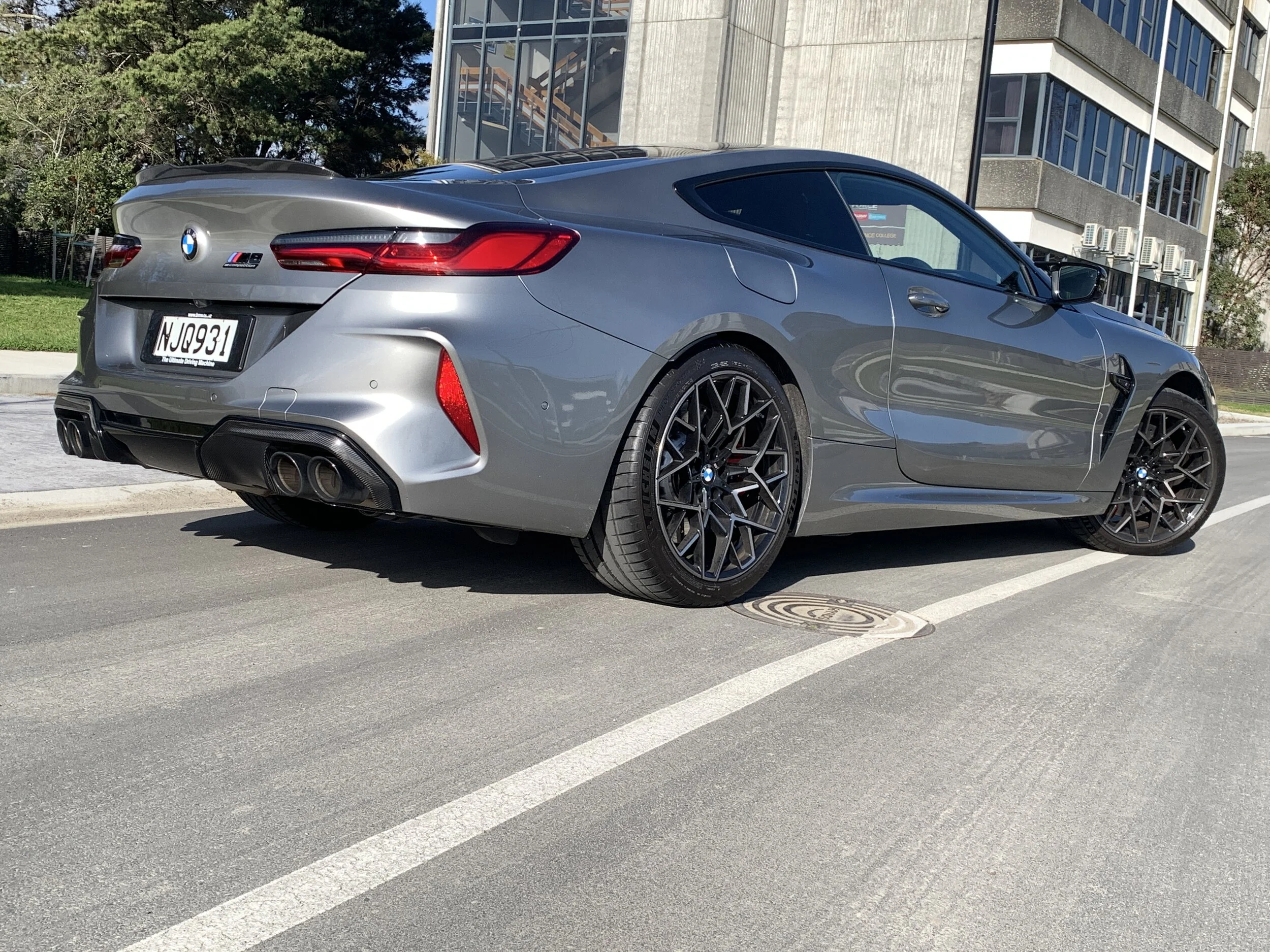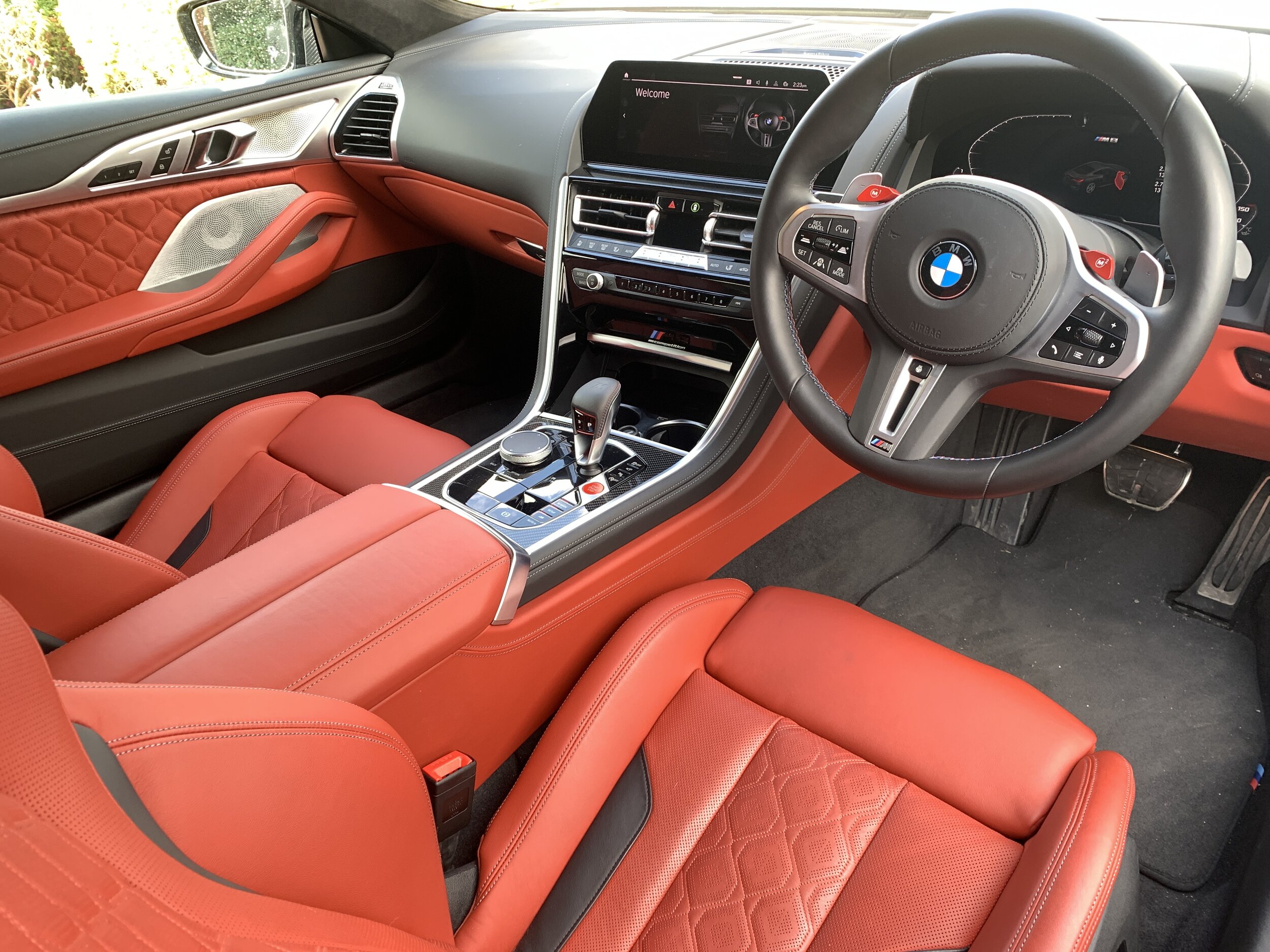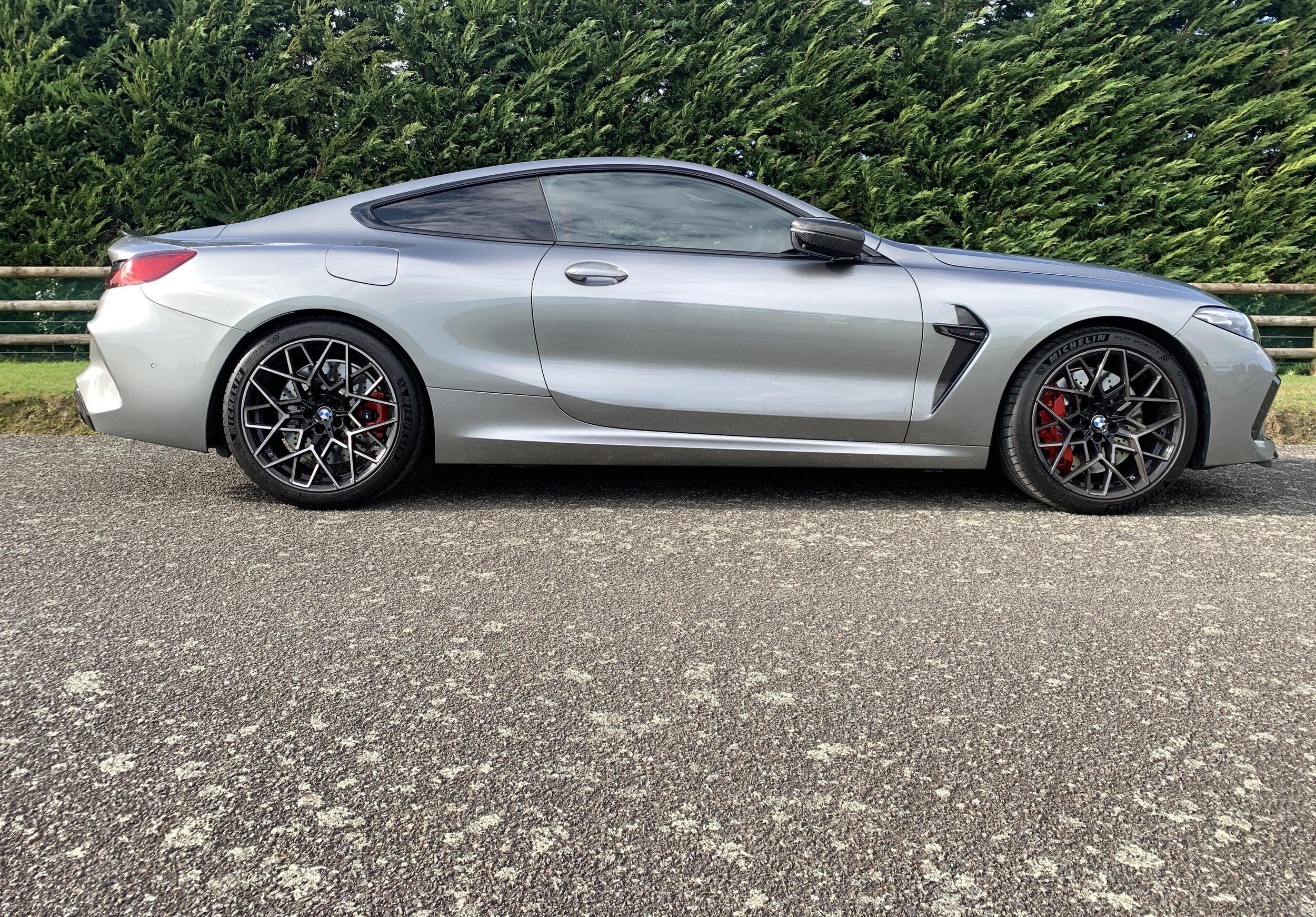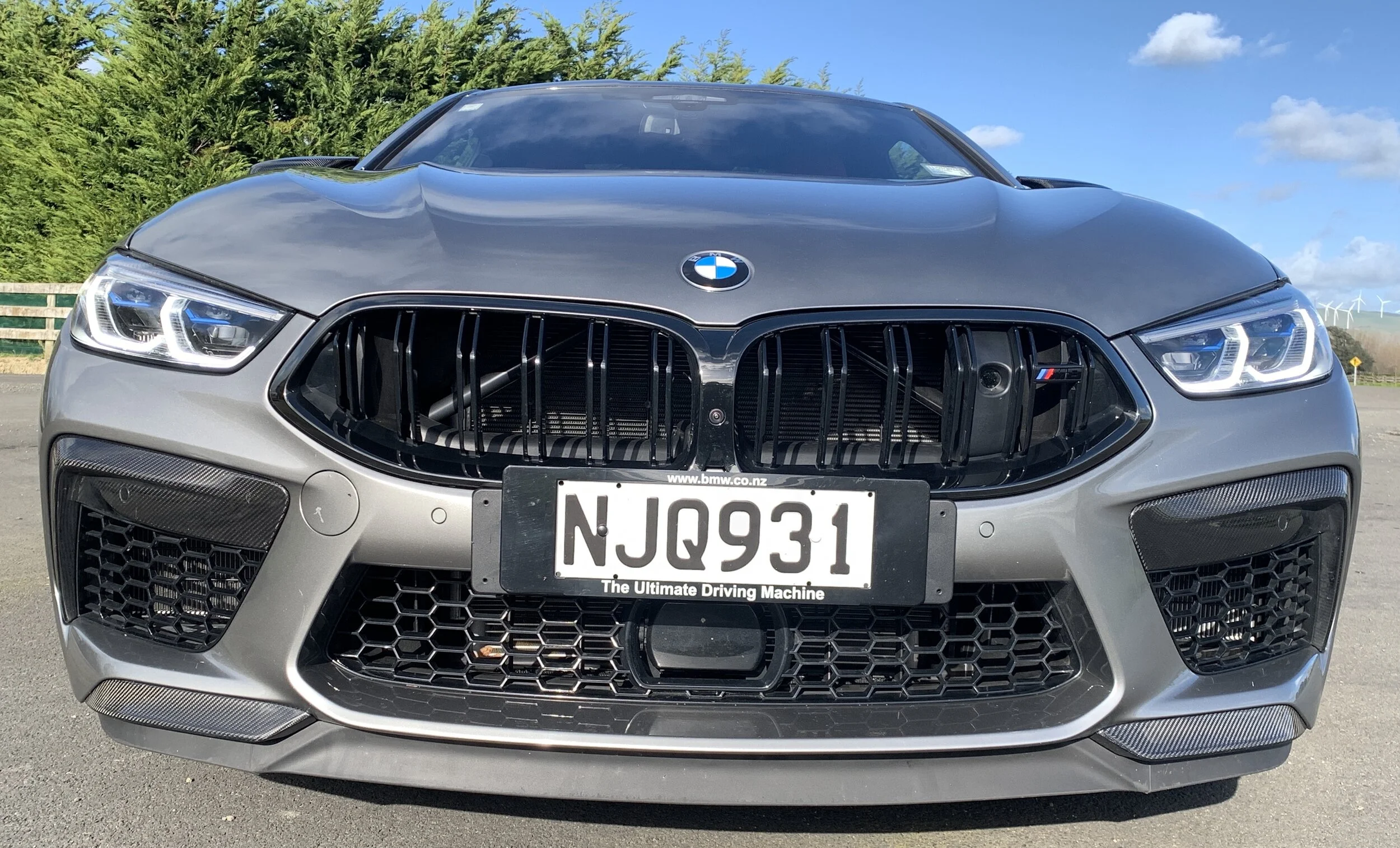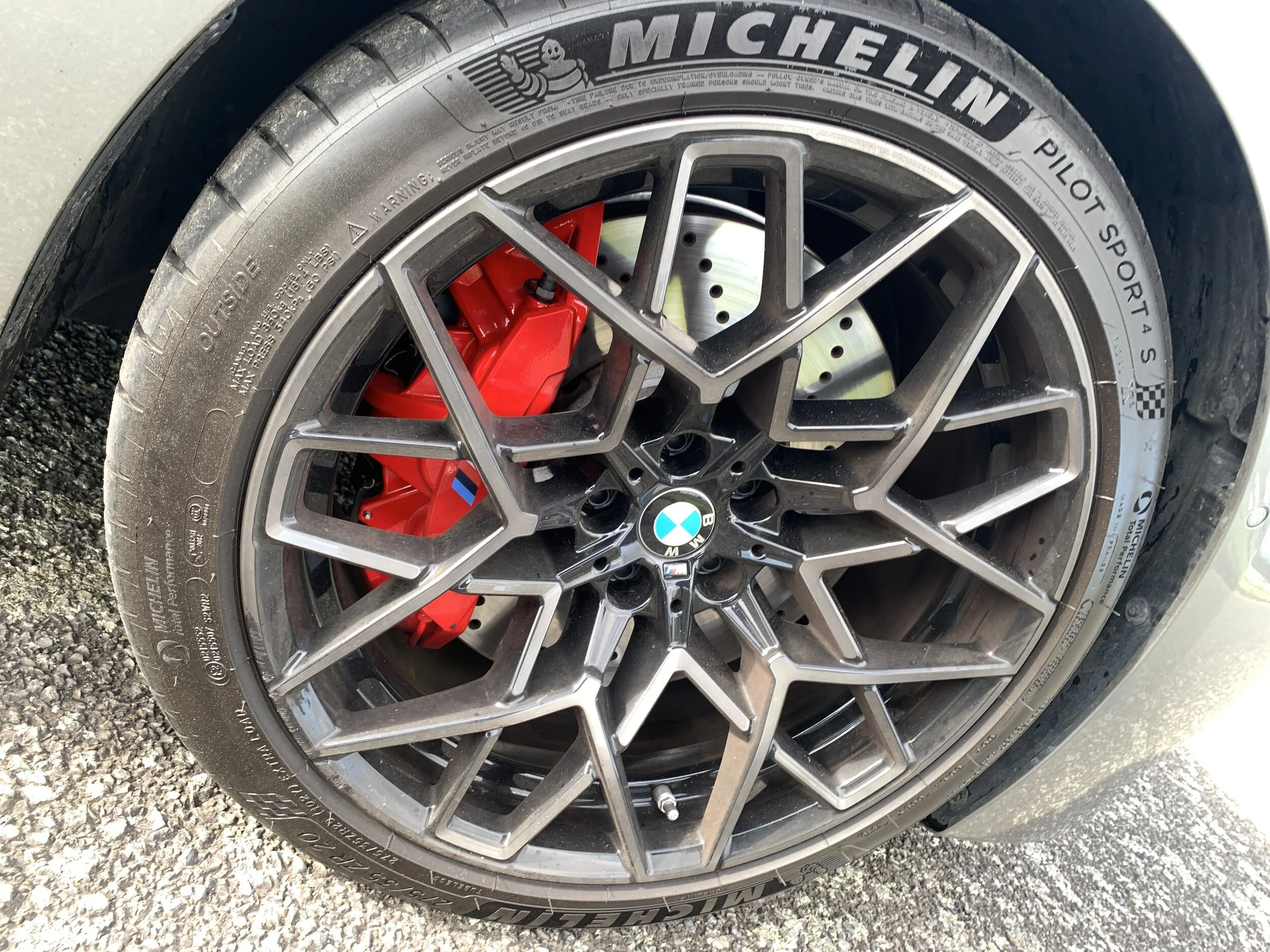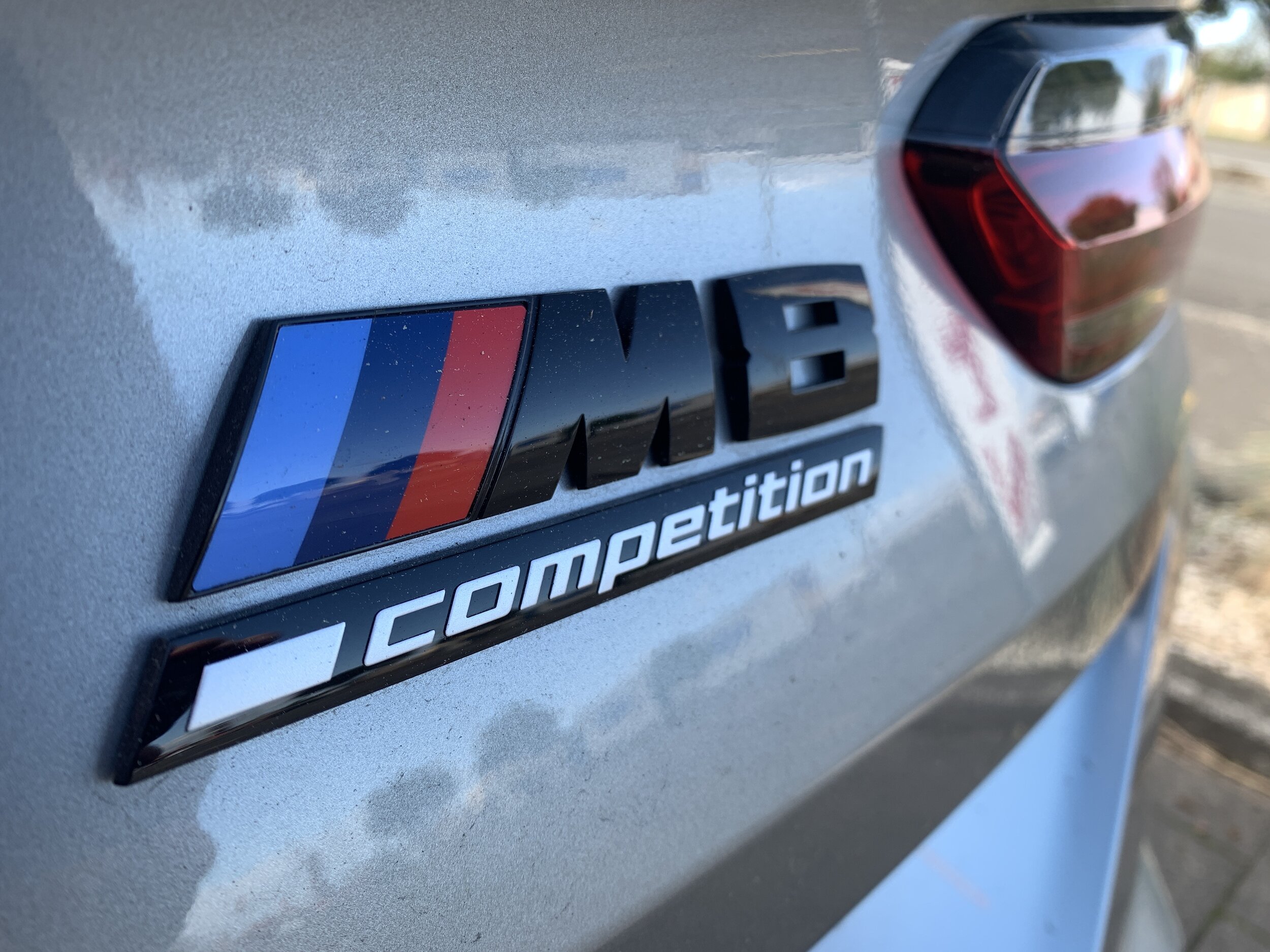BMW M8 Competition review: Outrageous, opulent overkill
/Awesome and yet surely also now an anachronism; this massive two-door is perhaps chasing pole position for a race that’s already been run.
Base price: $332,900
Powertrain and economy: 4.4-litre turbo-petrol V8, 460kW/800Nm, 8-speed automatic, AWD, combined economy 10.4 L/100km, CO2 239g/km.
Vital statistics: 4867mm long, 2137mm wide, 1362mm high, 2827mm wheelbase, luggage capacity 420 litres, 20-inch alloy wheels.
We like: Beautifully engineered, awesome soundtrack.
We don't like: Expensive, absurd, fast-tracking to obsolescence.
HUBRIS-fuelled top-end cars are nothing new, but latterly we do seem to be seeing a heck of lot of them.
Shaping up for the unavoidable transition away from fossil fuels to electric and hydrogen has triggered a rush to deliver ‘last-ever’ outrageous petrol-addicted products that hardly make sense now and might well seem all the more ridiculous in a few years.
It’s as if there’s no tomorrow. Because there really isn’t. At least, not for this stuff.
As much as BMW is forging strongly into the electric market, it’s also making the most of this crazy interlude, particularly via an obvious channel.
Mention the letter ‘M’ and non-one, except perhaps a few diehard James Bond fans, will be confused about the subject matter being Munich’s performance division. Created in the 1970s to facilitate BMW’s motorsport programme, this specialist tuning arm now specialises mainly in performance road cars that sit at the top of the range, none of which are so far electrified, though that day is fast coming.
If rumours circulating at the moment had credibility, then it’s now last rounds for the petrol-fed twin turbo V8 that presently has top billing. The next generation of recipients will take a hybrid version and, ultimately, even that will be an alternate choice. Fully battery-driven versions of the 5 and 7 Series are expected by 2023, likely to be badged as the i5 and i7 respectively, and a high-performance i5 M model using three electric motors to deliver around 600kW is expected to be seen in 2025.
Meantime, the 4.4-litre eight cylinder is available without any significant electric energy assist in a number of different bodyshapes across a wide price band, topping out with the M8 tested here.
A brilliant-engineered ego polisher that really is a galaxy away from conforming in the slightest to mainstream tastes and budgets, this is perhaps exactly the car you would love to rock up to a school reunion in to remind those classmates of 20 years back that the ‘wasted time’ on video games has actually been … well, incredibly profitable.
In the real world, though, like so many rich-lister pickings of this calibre, it also stands chance of being a plump target for proletariat scorn. Hugely priced, hugely thirsty for of a dwindling hydrocarbon resource. An over-large car with an almost laughably under-sized cabin (and boot) sitting so low as to be awkward to egress. Who can afford such a thing and, given how little time is supposedly left for this kind of car, why would they?
Answer to the first part of that question is ‘probably just a handful of Kiwis in any given year’. And to the second? Well, yeah, that’s a harder one …
Fair dues, as incredibly exorbitant as it all seems, the car does compete in an actual category. Further, as much as BMW seems to be taking the proverbial on price, fact everything with a petrol engine it should be compared against is generally even more expensive.
Picking rivals is hard. Audi and Mercedes Benz don’t make fully equivalent cars. Bentley and Aston Martin do, but theirs are even pricier, some by considerable margin. A well-kitted Porsche 911? Well yes, in a way, but then again, not really.
As much as Munich makes out that its car is a ‘grand tourer’, the actual experience of driving it suggests that’s BMW BS. The super-sized fuel tank allows decent distance, true, yet it’s too much of a bruiser to pass muster as a laidback lounger for languid long-distance driving. Yes, it will cruise obediently at the legal limit, but even in the least pugnacious drive settings, explosiveness is but a toe twitch away. It’s among those cars that leaves impression you only need to think the word ‘speed’ and it’ll be going faster than anyone should ever dare to admit to.
So it’s a full-out sports car? Erm, not, not really that, either. Yes, it has the performance and the chassis is not without talent, thanks to the vast array of driving options, but it’s neither the right weight nor the right size to feel nimble and lithe.
Anyway, the bigger question is: Why not just buy an M5? It’s fair to ask that given that you basically are doing just that. Just for quite a bit more money than is asked for a super sedan that is already quite pricey. You have to ask why when they have the same engine and an identical automatic four-wheel drive, which can also be put into rear-drive. The coupe has a shorter wheelbase, sits 10mm lower, has a 38mm wider rear track and is more firmly sprung. But DNA-wise, they’re still close kin.
The closed two-door format BMW NZ has gone with is one of three available body styles – there’s also a five-door Grand Coupe and a convertible - but the only one that automatically restricts to mechanicals in Competition tune, with adds extra ‘M-ness’. In power and torque terms, it has only 7kW less and, remarkably, 50Nm more than the ultimate CS version of the M5.
That the M5 models nonetheless achieve fractionally faster reactions in the 0-100okmh sprint is down to the coupe having more mass to move. But there’s just a hair in it: It will smash up to the open road limit from standstill in 3.2 seconds, so just two-tenths off the CS and one-tenth off the M5 Competition. The gap widens a touch in the 0-200kmh run and for overall top speed but, basically, whenever a M5 does best, the M8 is right up its tailpipe.
That makes it sound very tasty, I know, but it’s like great food; sometimes it’s not just about flavour. So much also hangs on presentation.
Coupes are always dead-ringers to win any fashion contents and, while this one comes up short of looking downright sexy, it does project powerful street presence. The grille will spit opinion, naturally, but the narrow headlights, the long bonnet, slim rear lights conjoined by a red DRL strip, the type-specific carbon-fibre double-bubble roof and star-shaped 20-inch wheels, those four orange-swallowing exhaust pipes; these and the test car coming in an awesome gunmetal grey finish made it look muscular and massively eye-catching.
And, yet, well … funny thing. Though acknowledging it as a BMW, few people could pick what kind it was. I really don’t imagine that would have happened had it been an M5 (and M3); those badges are such solid currency within the car world. But M8?
Slip down into the cabin and you’re enveloped in a high-quality setting. Blood orange leather might not be your thing (don’t worry, you can pick another hue) but it is thoroughly well finished, sumptuous and brimming with M-specific finishing touches. Figure-hugging, leather/Alcantara-trimmed sports seats set the tone with their illuminated 'M8' badges, while the centre console features lots of lacquered carbon fibre trim. You'll find a new shifter for the transmission that’s initially a little confusing to operate, plus a big red engine start/stop button and other switchgear that isn’t in a ‘regular’ 8 Series. The digital instruments get bespoke M layouts and readings, as does the central touchscreen and excellent head-up display.
It’s complex. I’ve driven lots of BMWs and plenty with different iterations of iDrive, yet have to admit the array of driving mode controls here presented a real test. One colleague who feels the same reckoned it’s as if BMW and Mercedes-AMG are competing to see which can create this year’s most baffling cabin.
Dunno about that. As it happens, I came to the M8 more or less directly from the new S-Class; both deliver the best systems from each brand and, frankly, Mercedes’ interface is much easier to fathom and live with.
Conceivably, once you’ve sorted audio, climate and potentially navigation requirements (though, for the latter, I generally just use CarPlay, which BMW hosts well with wireless connect and recharging) the only reason to go into the menus is to sort out the preferred driving and chassis feel modes, which could well take some time.
Fortunately, the busy but perfectly-sized steering wheel has the now obligatory M1/M2 buttons marked out in bright red to programme the fundamentals. A previous user had already sorted M1 to slightly sporty and M2 to full-out attack - perfect as far as I was concerned.
M cars are always about the driver, and rightly so, but the M8 really reinforces this by the size of its cabin; sure, coupes are not ever family-friendly, yet you’ll surely be baffled how such a large car squanders space. While those up front do okay for legroom, anyone tall in either chair will find need to put it into a low position so as to not risk rubbing the roof lining.
There’s good reason why the back seat will always look showroom-fresh; getting into there is a big effort for an adult and, once positioned, your only thought is of how to escape. It really is that poor.
Press that bright red engine-start button and the twin-turbo V8 kicks into life with conviction. It certainly sounds like the real deal. The driving experience is initially about getting used to the throttle feel and the car’s dimensions, not just the length but also the lane-filling girth. With such big doors, you’ll always be looking for a supermarket stop beside a pedestrian lane.
The around-town driving is a rumbling cruise; head onto the open road and the basso tone really doesn’t alter in note, just volume. Find a place where you are stretch those legs just a bit more and that growl quickly gains a lot of extra grrr.
It’s a car that obviously asks for driving conditions we don’t have; you’d imagine it must be quite a sight at full noise in the fast lane of an autobahn. Driving it on a secondary road at pace opens the door to some insight to its muscularity, but even then you’d be brave to achieve even 50 percent of its true strength. Certainly, even when I was pushing as hard as I dared, it was no-where near giving its all by any means. The power is intoxicating; there’s a soft, big-boosting nature to how it unfurls. But fast is truly fast.
The eight-speed auto can be configured to suit the mood; it’s smoothest of course in the fully automatic setting. Switch into the manual mode and set the shift to its fastest most ferocious gear-changing level and it’s almost like a racing gearbox.
As said, it’s the same core all-wheel-drive system as meted the M5, so can vary drive infinitely front to rear and across the rear axle. The latter is done with the well-developed Active M differential, an electronically controlled unit that varies its characteristics depending on driving mode.
The engine response and damping can be altered through three levels (Comfort, Sport and Sport Plus), while the steering and braking have two. The M xDrive system, can be switched between standard 4WD to 4WD Sport and then 2WD. The latter is akin to prodding a very large bear with a short stick. I stayed in all-paw; all that grunt through the rear tyres alone would likely murder the rubber and stretch my skill too far. In AWD it grips brilliantly and kinda feels rear-driven anyway. You just have the security of all the turning wheels working to pull it straight when things get messy.
The brakes are as stunning as the engine’s oomph. There are two settings, Sport being the more aggressive, that allows different calibrations of the brake pedal feel but also alter the way the stoppers interact with the stability control.
Hold down the M Mode button and the Track setting is put in place. This disables all the assistance systems and even turns off the infotainment screen and audio system for minimum distraction. I wasn’t brave enough for that one.
All in all, it’s a magnificent beast; a stallion of a car and the engineering is simply astounding; for one, it’s incredible this engine can be so powerful and yet also deliver, albeit only when light-footing, a sub 11.5 litres per 100km economy. That side of things is worthy of acclaim. Likewise the sheer irreverence of the thing.
But nagging away strongly, at least with me, was the strong sense of it also being … well, pretty much irrelevant. It’s a great show pony, true, but aside from being too ‘big’ to be of much use here – you just know that, for all it does well, an M3 or M4 (both of which retain ongoing credibility, in my view), being so much friendlier-sized, would do even better - there’s the feeling that cars of this scale are lining up for a race that has already been run. We need, surely, to move on. And move ahead.
I listed the petrol rivals. Now it’s time to mention the electrics. If it’s all about the step-off oomph, then the yet-to-land Tesla Model S Plaid and already established Audi e-tron GT RS and the Porsche Taycan are even faster sprinters and also achieve phenomenal cited top speeds. The two from Germany also deliver similarly superb quality, equipment, fit and finish. The Audi’s the only one I’ve driven and, frankly, though also a heavyweight on a winding road, it’d be hard for the M8 to shake. They’re all price-advantaged, too.
But that’s only half the point. Spend big on a performance EV and you’re banking on the future more than metaphorically.
It’s hard to say if any electric represents as a strong investment; but in terms of pace of depreciation, it’s easy to imagine the M8 also leaving the new-era fare eating its dust.

